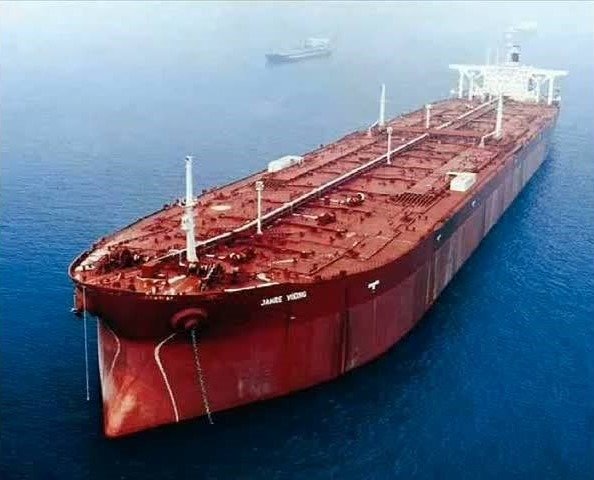Knock Nevis, also known as the Seawise Giant, was a supertanker that was once the largest ship ever built. It was constructed in 1979 by Sumitomo Heavy Industries in Japan for the company Oppama Shipyard Ltd. The ship had a length of 458.45 meters (1,503.0 feet) and a fully loaded displacement of 657,019 tonnes.
During its operational lifetime, Knock Nevis was used primarily as a crude oil carrier, transporting oil from the Middle East to various locations around the world. In 2009, after nearly 30 years of service, the ship was finally retired and scrapped in Alang, India.
10 Facts about Knock Nevis – Seawise Giant
- 10 Facts about Knock Nevis – Seawise Giant
- 1. Knock Nevis held the title of the largest ship ever built
- 2. It look 5 years for the Shipyard to build this Supertanker – Seawise Giant
- 4. Knock Nevis was owned by more than 4 owners throughout its lifetime
- 5. Knock Nevis was involved in groundings, was damaged in a Missile attack and Mine blasts.
- 6. Knock Nevis was not the Biggest supertanker ever built initially but was Modified by the new Owners to become one.
- 7. Knock Nevis was too big to safely navigate in English Channel, Panama Canal etc
- 8. Knock Nevis hold several World records – Hall of fame
- 9. Crewings, Construction cost & Maintenance of Knock Nevis was Huge
- 10. Knock Nevis had a Top speed of 16 Knots – 18 miles/her which is significant as per its size
- 11. The Last Voyage of Knock Nevis ended in a Scrapyard
- 12. Legacy of Knock Nevis remains a Symbol of Golden Age of Shipping
1. Knock Nevis held the title of the largest ship ever built

Dimensions: The ship had a length of 458.45 meters (1,503.0 feet), a beam of 68.8 meters (225.7 feet), and a fully loaded draft of 24.6 meters (80.7 feet). Its gross tonnage was 260,941 and it had a capacity of 564,763 cubic meters.
It was so big that Biggest building feel small in front of it. A comparison diagram of the Knock Nevis with several large buildings. From left to right: Eiffel Tower, Empire State Building, Petronas Towers, Knock Nevis, Willis Tower, Taipei 101 and Burj Khalifa.
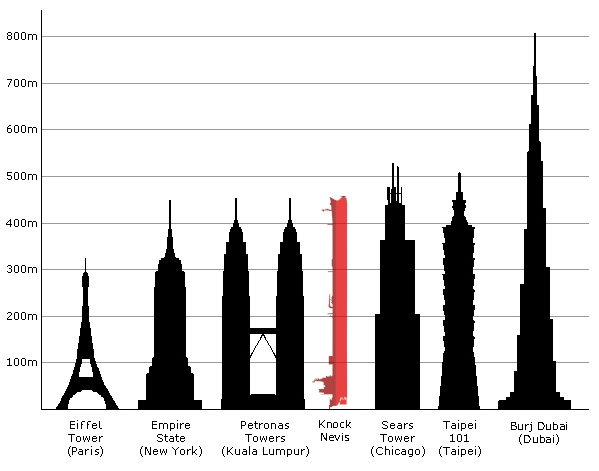
See More size comparison of Knock Nevis here
2. It look 5 years for the Shipyard to build this Supertanker – Seawise Giant
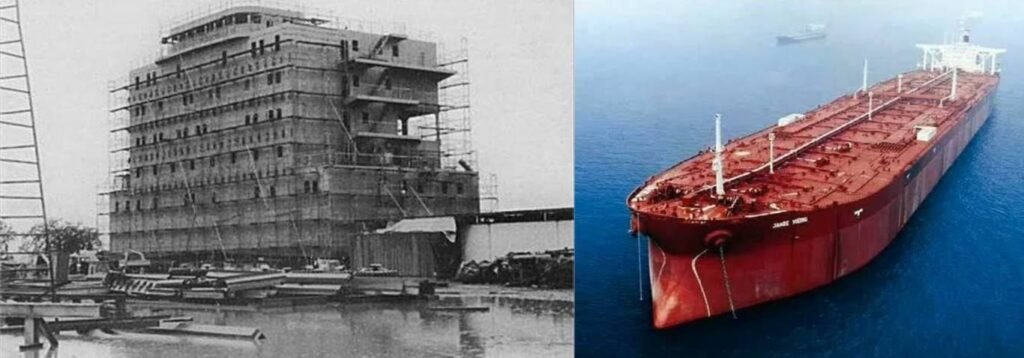
Construction: The construction of the Knock Nevis began in 1974 at Sumitomo Heavy Industries’ Oppama Shipyard in Yokosuka, Japan. It was originally named the “Oppama” before being renamed the “Seawise Giant” upon its completion in 1979.
Seawise Giant was ordered in 1974 and delivered in 1979 by Sumitomo Heavy Industries, Ltd. (S.H.I.) at her Oppama shipyard in Yokosuka, Kanagawa, Japan, as a 418,611-ton Ultra Large Crude Carrier (ULCC).
The vessel remained unnamed for a long time, and was identified by her hull number, 1016. During sea trials, 1016 exhibited severe vibration problems while going astern. The Greek owner refused to take delivery and the vessel was subject to a lengthy arbitration proceeding. Following settlement, the vessel was sold and named Oppama by S.H.I.
4. Knock Nevis was owned by more than 4 owners throughout its lifetime
The Knock Nevis was owned by a variety of companies over its lifetime, including First Olsen Tankers, Jahre Shipping, OOCL and OSG Ship Management. It was primarily used to transport crude oil from the Middle East to various locations around the world.

The Knock Nevis was originally owned by Oppama Shipping, a subsidiary of Japanese shipping company Sanko Steamship Co. Ltd. It was later sold to First Olsen Tankers, a Norwegian shipping company, in 1985. In 1991, it was sold to Jahre Shipping, a Liberian company owned by Norwegian shipping magnate Jørgen Jahre.
Knock Nevis was renamed Mont, and reflagged to Sierra Leone by new owners Amber Development for a final voyage to India where it was scrapped at Alang by Priyablue Industries.
Also Read Knock Nevis – Everything about the Largest Ship Ever Made
5. Knock Nevis was involved in groundings, was damaged in a Missile attack and Mine blasts.




In 1988, the Seawise Giant was damaged and sunk during the Second World War (Iraq-Iran war) by an Iraqi Air Force attack while anchored off Larak Island, Iran on 14 May 1988 and carrying Iranian crude oil. The ship was struck by parachute bombs.
Fires ignited aboard the ship and blazed out of control and it sank in the shallow waters off the coast. The ship was declared a total loss and was written off
After the war, Norman International bought the wreckage, got it repaired in Singapore, and launched it again as Happy Giant. These repairs were done at the Keppel Corporation shipyard in Singapore after towing the vessel from the Persian Gulf. It entered service in October 1991 as Happy Giant
Read full Story Knock Nevis – Everything about the Largest Ship Ever Made
6. Knock Nevis was not the Biggest supertanker ever built initially but was Modified by the new Owners to become one.

The Knock Nevis underwent several modifications over its lifetime to increase its size and carrying capacity. In 1981, its original superstructure was replaced with a new, larger one. In 1986, it was lengthened by 31 meters (102 feet) to increase its carrying capacity. In 1991, it was further lengthened by 18.5 meters (61 feet). At this point, it reached its maximum length of 458.45 meters (1,503.0 feet).
Orient Overseas Container Line (OOCL) founder C. Y. Tung before taking the delivery ordered to lengthen the ship by several metres and add 146,152 tonnes of cargo capacity through jumboisation. Two years later the ship was relaunched as Seawise Giant. “Seawise”, a pun on “C.Y.’s”, was used in the names of other ships owned by C.Y. Tung, including Seawise University.
After the refit, the ship had a capacity of 564,763 tonnes deadweight (DWT), a length overall of 458.45 m (1,504.1 ft) and a draft of 24.611 m (80.74 ft). It had 46 tanks, and 31,541 m2 (339,500 sq ft) of deck space.
7. Knock Nevis was too big to safely navigate in English Channel, Panama Canal etc
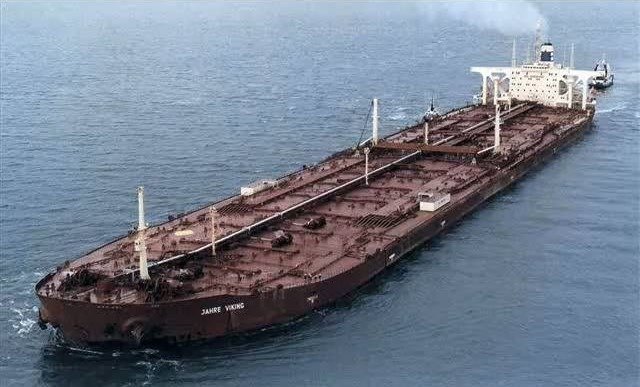
When Seawise Giant was fully loaded its 25 meter/81 foot draft was too deep for the ship to safely navigate the relatively shallow waters of the English Channel. The rudder weighed 230 tons, and the propeller weighed 50 tons.
- Methane Slip – Shipping’s Growing Decarbonisation Threat
- What happens to Ship scrap?
- The Old Sailor Poem by Margaret Elizabeth Sangster
- What’s new in OCIMF SIRE 2.0 – Changes in Sire 2.0
- 10 Best Boat/Ship Movies of All Time
8. Knock Nevis hold several World records – Hall of fame
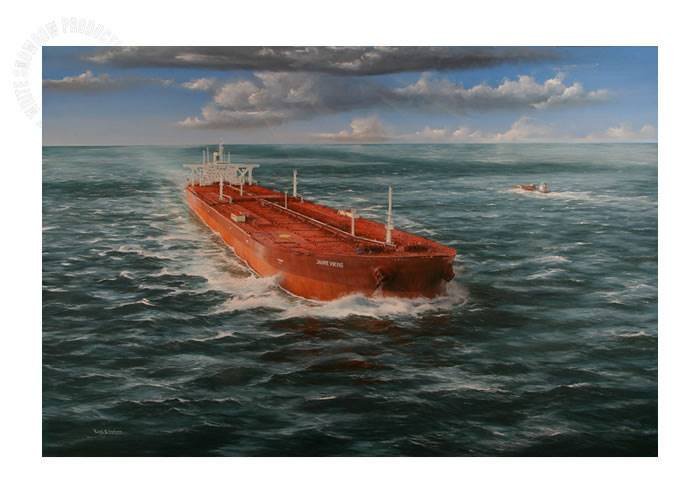
The Knock Nevis held several world records, including the largest ship by length, the largest ship by gross tonnage, and the largest ship by deadweight tonnage. Its maximum carrying capacity was around 646,642 tonnes, which made it the largest ship by cargo capacity as well.
The Knock Nevis held several world records during its time, including:
- Largest Ship by Length: At 458.45 meters (1,503.0 feet) long, the Knock Nevis was the longest ship ever built.
- Largest Ship by Gross Tonnage: The Knock Nevis had a gross tonnage of 260,941, which made it the largest ship by gross tonnage.
- Largest Ship by Deadweight Tonnage: The Knock Nevis had a deadweight tonnage of 564,763, which made it the largest ship by deadweight tonnage.
- Largest Ship by Cargo Capacity: The Knock Nevis had a maximum carrying capacity of around 646,642 tonnes, which made it the largest ship by cargo capacity.
These records made the Knock Nevis a true giant of the seas and a marvel of engineering. Its size and capacity were truly impressive, and it remains a symbol of the golden age of shipping.
9. Crewings, Construction cost & Maintenance of Knock Nevis was Huge
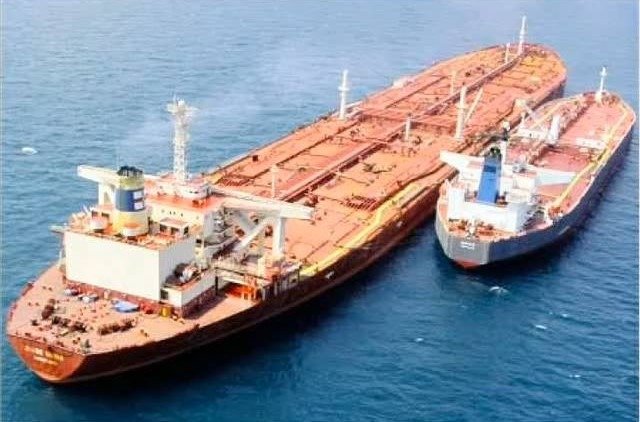
The construction cost of the Knock Nevis was reportedly around $110 million, which was a huge amount of money at the time. This was due to the ship’s massive size and the complex engineering required to build it. In addition, the modifications made to the ship over its lifetime, including the lengthening of its hull and the replacement of its superstructure, were also expensive.
Knock Nevis had a crew of around 40 to 50 people. It was usually maintained and run by Indian crew and Indian Navigating officers. However, given the size of the ship, crewing it was a complex and challenging task. The crew had to be highly skilled and experienced to operate the ship safely and efficiently. In addition, the ship’s size meant that it required a lot of food, fuel, and other supplies, which had to be carefully managed and stored.
Maintaining a ship as large as the Knock Nevis was a significant challenge. The ship had to be inspected regularly to ensure that it remained seaworthy and safe to operate.

In addition, the ship’s systems and equipment had to be maintained and repaired as needed, which was a complex and time-consuming process due to the ship’s size. The cost of maintenance was also significant, as the ship’s systems and equipment required specialized parts and expertise.
Retirement and Scrapping: In 2004, the Knock Nevis was sold to Indian shipbreakers and towed to India to be scrapped. However, due to financial and legal issues, it remained anchored off the coast of India for several years. It was finally beached in 2009 in Alang, India, where it was dismantled for scrap metal.
10. Knock Nevis had a Top speed of 16 Knots – 18 miles/her which is significant as per its size
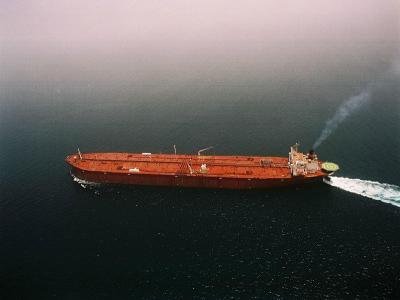
Top speed of the Knock Nevis was around 16 knots (18 miles per hour), although it typically operated at a lower speed to conserve fuel.
It’s Main Engine being used for propulsion was 2 Mitsubishi V2M8 boilers (Designed by Combustion Engineering) Sumitomo Stal-Laval AP steam turbine, producing freaking 50,000 hp
11. The Last Voyage of Knock Nevis ended in a Scrapyard
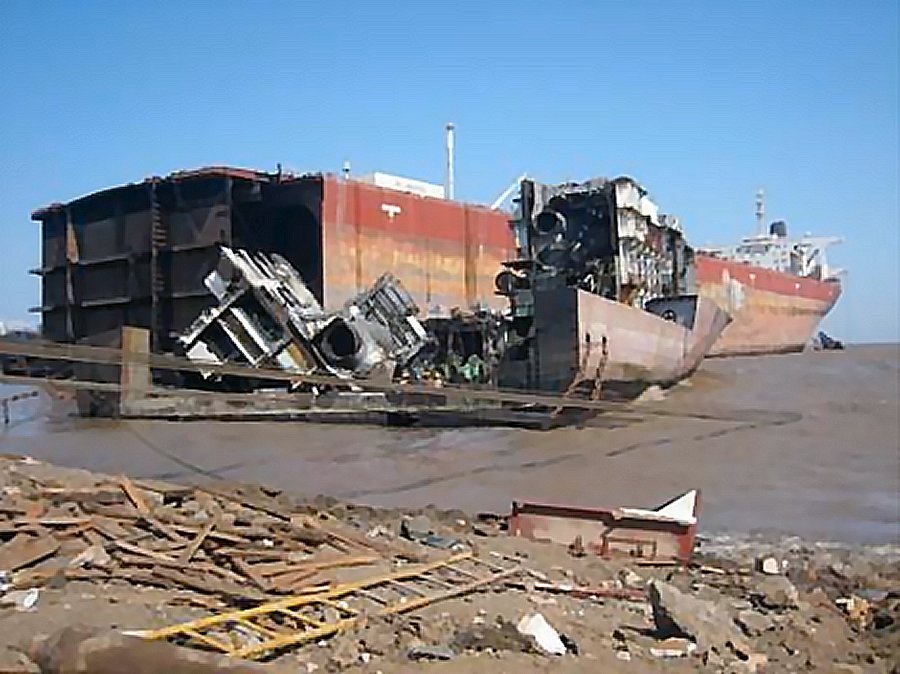
Knock Nevis was renamed Mont, and reflagged to Sierra Leone by new owners Amber Development for a one last final voyage to Alang, India where it was scrapped at by Priyablue Industries.
The vessel was beached on 22 December 2009. Due to the length and the size of the vessel, scrapping only finished at the end of 2010
The demolition of the Knock Nevis began in 2009 and lasted several years. It was a difficult and dangerous process due to the ship’s size and the amount of hazardous materials on board. It was estimated that the ship contained around 80,000 tonnes of steel, which was recycled for other purposes.
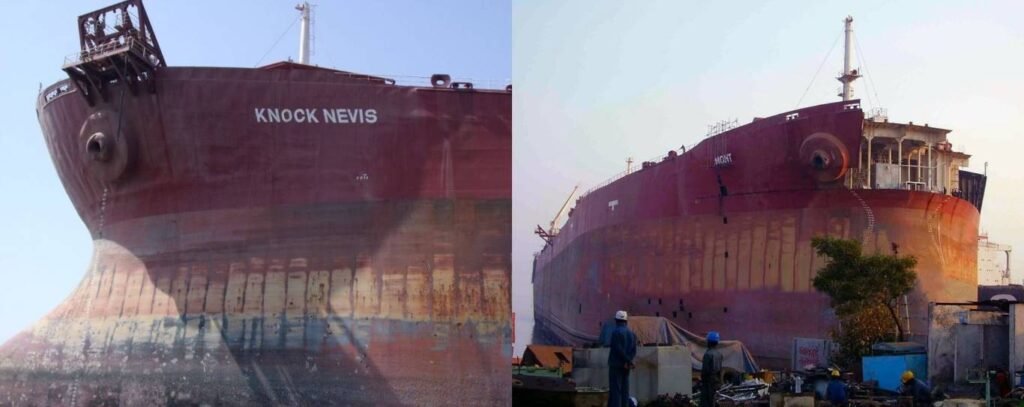
12. Legacy of Knock Nevis remains a Symbol of Golden Age of Shipping
The Knock Nevis remains a symbol of the golden age of shipping and the peak of supertanker construction. It was the largest ship ever built until it was surpassed by the Emma Maersk in 2010. Its size and legacy have inspired awe and admiration among shipping enthusiasts and historians alike.

Source: Top 10 Biggest LNG Ship Carriers in the World – Latest 2023
Fun Fact about Seawise Giant: The name “Knock Nevis” was given to the ship by its final owner, an Indian shipbreaking company called Priya Blue Industries. The name is a combination of “knock,” which refers to the process of knocking down the ship for scrap, and “Nevis,” which is a reference to the Caribbean island of Nevis.
Related News: In recent news, the shipping industry is facing increasing pressure to reduce its carbon footprint, and some are calling for the revival of supertankers like the Knock Nevis to transport green hydrogen or carbon dioxide. However, it remains to be seen if this will actually happen given the high costs and environmental concerns associated with supertankers.
You may also like,
- Esso Northumbria – 10 Facts about the Largest Ship of 1971
- Why Knock Nevis was Scrapped – The death of Seawise Giant

